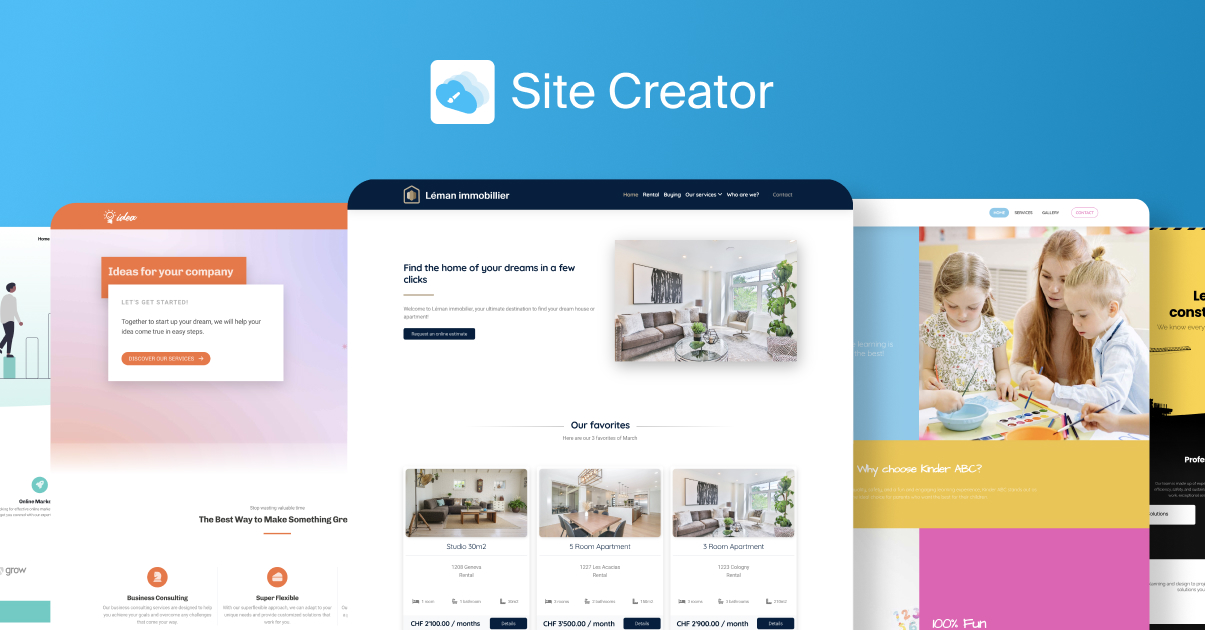We’ve tested Gutenberg, WordPress 5.0’s upcoming content editor, for you. You’ll find all the answers to your questions in this article as well as a mini-guide to find out more about this major development for WordPress, the world’s favourite tool for creating websites.
If you created your site with WordPress, you probably noticed that a mini revolution is under way with the upcoming launch of the new content editor: Gutenberg. Like anything new, it leads to a host of questions and changes to our habits:
- “Will it totally mess up my site?”
- “How does Gutenberg work?”
- “What advantages does Gutenberg have?”
- “What’s going to happen to page builders?”
- “Will I be obliged to use Gutenberg?”
- Etc.
If you’ve got any questions whatsoever on this mini revolution, then this article is perfect for you 🙂
“Change is the law of life. And those who look only to the past or the present are certain to miss the future.” John Fitzgerald Kennedy
Gutenberg: what, why, when?
What is Gutenberg?
Gutenberg is the content editor which will soon replace the editor which you’ve been using for years. It is named after Johannes Gutenberg, inventor who revolutionized the art of printing and reproducing texts over 500 years ago.
This new development is designed to make creating content easier than ever before. With Gutenberg, you’ll build your pages by sliding blocks like images, videos, galleries, etc., which enables you to really easily create amazing layouts perfectly optimised for mobiles. No need to use endless shortcodes for creating columns, for framing texts or for integrating your social networks.
With WordPress’ upcoming major update, you’ll now natively have an extremely easy-to-master Page Builder.
When is Gutenberg going to be rolled out?
Gutenberg will be rolled out when WordPress 5.0 is launched but the developers haven’t confirmed the release date yet.
By keeping an eye on WordPress’ usual update schedule, we can reckon on the update arriving before end 2018 or, at the latest, during Q1 2019.
Gutenberg: real effects on your current site
Will my site be Gutenberg-compatible?
The WordPress community has been getting ready for quite some time now for the advent of this new editor. By updating your site regularly (we strongly advise you to do this for security reasons), in the majority of cases, you won’t need to take any action if you use common plugins and themes.
If you didn’t create your site yourself or if you’re not sure that you’re using themes or components which are regularly updated, feel free to contact your webmaster or one of our partners to check your site compatibility with WordPress 5.0.
I built my site with a Page Builder (Divi, Elementor, Visual Composer, Beaver Builder, Thrive Architect). Will it still work with Gutenberg?
- Elegant Themes: Elegant Themes has confirmed this, Divi and Gutenberg are now compatible.
- Elementor: Elementor has also confirmed this by introducing new features in its version 2.1 offering for example the possibility to easily switch between Gutenberg and Elementor.
- Visual Composer: the most widely-used Page Builder on the Themeforest platform will also be Gutenberg-compatible (source). You will have a choice between two options:
- Use the Gutenberg editor with your Visual Composer layout
- Disable/Enable the Gutenberg editor (if you wish to continue using the classical editor)
- Beaver Builder: Beaver Builder 2.1 and Gutenberg are compatible (source). Based on your preferences, you’ll be able to choose between the classical editor, Gutenberg and Beaver Builder.
- Thrive Architect: Shane Melaugh, Thrive Theme’s mastermind, confirmed that Thrive Architect will be fully Gutenberg-compatible.
Will Gutenberg replace Page Builders (Divi, Elementor, Visual Composer, Beaver Builder, Thrive Architect)?
Users who discover WordPress will be over-the-moon with Gutenberg which now offers all essential features for ensuring layout appeal without having to add a paying plugin like Divi, Elementor, Visual Composer, Beaver Builder or Thrive Architect.
Advanced users or those who already use a Page Builder for advanced features can continue to build their pages with their favourite tool as long as it is WordPress 5.0-compatible.
As Gutenberg is still in its infancy, benchmark Page Builders currently offer many additional possibilities, however Page Builder developers will have to ramp up if they wish to reinvent themselves and convince users. At the end of the day, it will benefit the whole WordPress community.
Will I be obliged to use Gutenberg with WordPress 5.0?
- Before WordPress 5.0 is released, you have the choice to test the new WordPress Page Builder or continue to use the classical editor.
- However, the new editor will be default enabled in the next major WordPress version. As such, we advise you to test your theme and plugin compatibility before installing WordPress 5.0.
How can you test Gutenberg right now on your site?
Right now Gutenberg is only available as a plugin. However, we advise you not to install it on a site under construction as it is still in its beta version.
To install Gutenberg:
- Log on to the WordPress dashboard
- Choose Plugins >> Add
- Look for Gutenberg in the search bar
- Click Install
- Click Enable
Your editor is now usable and your site will now default to using Gutenberg.
Your first steps with Gutenberg
Now that we’ve seen how to install and enable Gutenberg, you’re ready to draft your first article with the new WordPress editor.
How does Gutenberg work?
Individual blocks
Gutenberg builds pages using blocks and each block proposes its own specific feature. For example, you can add a text, column, image or video block.
What if you wish to share a Spotify playlist? Or integrate a crowdfunding campaign? There’s also a block specifically for this. It’s ever-so easy to do.
You can stack, fit together, slide and move blocks on top of or next to others to create the articles and pages you’ve always dreamt of, a little like building a Lego construction.
What are the various types of integrated blocks?
When Gutenberg launches it will include the following blocks:
- Paragraph: for inserting paragraphs, customising font size, text colour and block background.
- Title: for integrating H1 to H6 titles, perfect for structuring your content and for optimising it for SEO.
- Image: for inserting images and for customising their look.
- Gallery: for creating amazing photo galleries. You just need to choose the number of columns and the content will auto-adapt.
- List: for adding lists of numbered or bulleted items.
- Quote: for adding quotes.
- Sound: for inserting audio files and where you can decide if the file should auto-play or loop-playback.
- File: for adding files which your visitors can easily download.
- Subheading: for writing text smaller than a title but larger than the base text.
- Video: for easily integrating videos into your pages and articles.
There are a great many other features which enable you to, in particular, modify content formatting, insert columns, buttons, separators or even integrate YouTube videos or content from the most popular social media platforms.
How can I insert a block?
By clicking the (+) to the left of Write your story, a pop-up appears and invites you to insert a block from the most commonly used ones. For example, let’s insert a paragraph block.
How can I customise a block?
Once you’ve created your blocks, you just need to click a block to customise its display in whatever way you wish. In our example above, we want to customise the first paragraph block by modifying text size, adding a drop cap as well as a grey background.
***
You’re now all set and ready for Gutenberg’s imminent arrival. As we’re sure you’ve realized, this new tool offers you the opportunity to create attractive sites ever-so easily.
If you don’t have your own site yet, now is the perfect time to discover WordPress which is even easier to use and much more powerful than before.
However, if you are looking for an even simpler alternative to WordPress, you should try Site Creator. With its intuitive interface, Site Creator is easy to use and allows you to create a website with a blog and an online store in just a few clicks. In addition, Site Creator does not require any updates and natively integrates many advanced modules.
All you need to get started is a web hosting solution optimised for WordPress and a domain name. Site Creator is included free of charge with Infomaniak’s web hosting solutions and Cloud Servers.
Find out more
How to protect your online presence and manage your domain names properly
Wednesday November 29th, 2023

 Français
Français Deutsch
Deutsch Italiano
Italiano Español
Español








You must be logged in to post a comment.